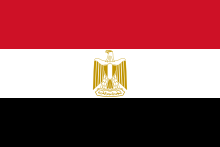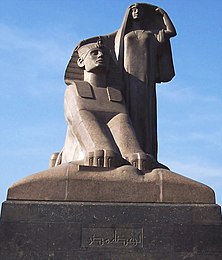The history of Egypt has been long and wealthy, due to the flow of the Nile River with its fertile banks and delta, as well as the accomplishments of Egypt's native inhabitants and outside influence. Much of Egypt's ancient history was a mystery until Egyptian hieroglyphs were deciphered with the discovery and deciphering of the Rosetta Stone. Among the Seven Wonders of the Ancient World is the Great Pyramid of Giza.

Muhammad Anwar es-Sadat was an Egyptian politician and military officer who served as the third president of Egypt, from 15 October 1970 until his assassination by fundamentalist army officers on 6 October 1981. Sadat was a senior member of the Free Officers who overthrew King Farouk in the Egyptian Revolution of 1952, and a close confidant of President Gamal Abdel Nasser, under whom he served as Vice President twice and whom he succeeded as president in 1970. In 1978, Sadat and Menachem Begin, Prime Minister of Israel, signed a peace treaty in cooperation with United States President Jimmy Carter, for which they were recognized with the Nobel Peace Prize.
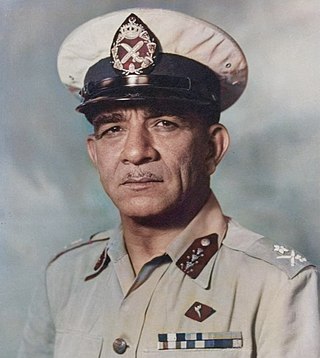
Mohamed Bey Naguib Youssef Qutb El-Qashlan, also known as Mohamed Naguib, was an Egyptian military officer and revolutionary, who along with Gamal Abdel Nasser, was one of the two principal leaders of the Free Officers movement of 1952 that toppled the monarchy of Egypt and the Sudan, leading to the establishment of the Republic of Egypt, and the independence of Sudan, and eventually South Sudan in 2010.
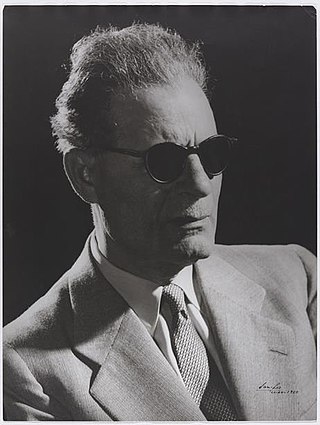
Pharaonism was an ideology that rose to prominence in Egypt in the 1920s and 1930s. A version of Egyptian nationalism, it argued for the existence of an Egyptian national continuity from ancient times to the modern era, stressing the role of ancient Egypt and incorporating anti-colonial sentiment. Pharaonism's most notable advocate was Taha Hussein. The movement largely faded by the 1940s, having failed to resonate with most Egyptians, and was superseded by pan-Arabism and Islamism.
According to most scholars the history of modern Egypt dates from the start of the rule of Muhammad Ali in 1805 and his launching of Egypt's modernization project that involved building a new army and suggesting a new map for the country, though the definition of Egypt's modern history has varied in accordance with different definitions of modernity. Some scholars date it as far back as 1516 with the Ottomans' defeat of the Mamlūks in 1516–17.

The ʻUrabi revolt, also known as the ʻUrabi Revolution, was a nationalist uprising in Khedivate of Egypt from 1879 to 1882. It was led by and named for Colonel Ahmed Urabi and sought to depose the khedive, Tewfik Pasha, and end Imperial British and French influence over the country.

Mohamed Hassanein Heikal was an Egyptian journalist. For 17 years (1957–1974), he was editor-in-chief of the Cairo newspaper Al-Ahram and was a commentator on Arab affairs for more than 50 years.
Liberalism in Egypt or Egyptian liberalism is a political ideology that traces its beginnings to the 19th century.
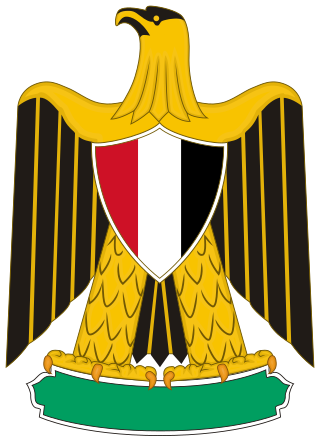
Nasserism is an Arab nationalist and Arab socialist political ideology based on the thinking of Gamal Abdel Nasser, one of the two principal leaders of the Egyptian Revolution of 1952, and Egypt's second President. Spanning the domestic and international spheres, it combines elements of Arab socialism, republicanism, secularism, nationalism, anti-imperialism, developing world solidarity, Pan-Arabism, and international non-alignment. According to Mohamed Hassanein Heikal, Nasserism symbolised "the direction of liberation, socialist transformation, the people’s control of their own resources, and the democracy of the peoples working forces."
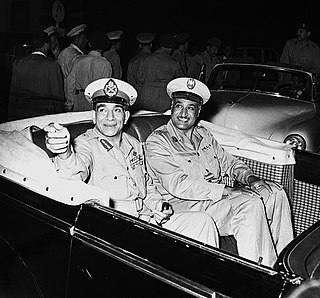
The Egyptian Revolution of 1952, also known as the 1952 coup d'état and 23 July Revolution, was a period of profound political, economic, and societal change in Egypt. On 23 July 1952 the revolution began with the toppling of King Farouk in a coup d'état by the Free Officers Movement. This group of army officers was led by Mohamed Naguib and Gamal Abdel Nasser. The Revolution ushered in a wave of revolutionary politics in the Arab World, and contributed to the escalation of decolonisation, and the development of Third World solidarity during the Cold War.
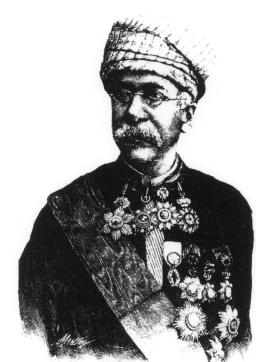
Yaqub Sanu, also known by his pen name "Abu Naddara", was an Egyptian Jewish journalist, nationalist activist and playwright. He was also a polyglot, writing in French, English, Turkish, Persian, Hebrew, and Italian as well as both Standard Arabic and Egyptian Arabic.

Egypt, officially the Arab Republic of Egypt, is a transcontinental country spanning the northeast corner of Africa and the Sinai Peninsula in the southwest corner of Asia. It is bordered by the Mediterranean Sea to the north, the Gaza Strip of Palestine and Israel to the northeast, the Red Sea to the east, Sudan to the south, and Libya to the west. The Gulf of Aqaba in the northeast separates Egypt from Jordan and Saudi Arabia. Cairo is the capital and largest city of Egypt, while Alexandria, the second-largest city, is an important industrial and tourist hub at the Mediterranean coast. At approximately 100 million inhabitants, Egypt is the 14th-most populated country in the world, and the third-most populated in Africa, behind Nigeria and Ethiopia.

Egypt–Iraq relations have varied over time, alternating from cooperation to rivalry over time. The modern relationship between Iraq and Egypt soured in 1977 when the two nations broke relations with each other following Egypt's peace accords with Israel. In 1978, Baghdad hosted an Arab League summit that condemned and ostracized Egypt for accepting the Camp David accords. However, Egypt's strong material and diplomatic support for Iraq in its war with Iran led to warmer relations and numerous contacts between senior officials, despite the continued absence of ambassadorial-level representation. Since 1983, Iraq has repeatedly called for the restoration of Egypt's "natural role" among Arab countries. In January 1984, Iraq successfully led Arab efforts within the OIC to restore Egypt's membership.

Contact between Egypt and Sudan goes back to trade and conflict during ancient times. In 1820, Egypt conquered Sudan, and continued to occupy the country, later as a condominium under the British, until Sudan declared Independence in 1956. Sudan later joined the Arab League, of which Egypt is a founding member. Relations between successive governments in Egypt and Sudan have warmed and cooled relations at various times. Relations today are cordial, but tensions remain.
The History of Republican Egypt spans the period of modern Egyptian history from the Egyptian Revolution of 1952 to the present day, which saw the toppling of the monarchy of Egypt and Sudan, the establishment of a presidential republic, and a period of profound economic, and political change in Egypt, and throughout the Arab world. The abolition of a monarchy and aristocracy viewed widely as sympathetic to Western interests, particularly since the ousting of Khedive Isma'il Pasha, over seven decades earlier, helped strengthen the authentically Egyptian character of the republic in the eyes of its supporters.
The Arab Cold War was a political rivalry in the Arab world from the early 1950s to the late 1970s, as part of the wider Cold War. It is generally accepted that the beginning of the Arab Cold War is marked by the Egyptian revolution of 1952, which eventually led to Gamal Abdel Nasser becoming president of Egypt in 1956. Thereafter, newly formed Arab republics, defined by revolutionary secular nationalism and inspired by Nasser's Egypt, engaged in political rivalries with conservative traditionalist Arab monarchies, led by Saudi Arabia. The Iranian Revolution of 1979 is widely seen as the end of this period of internal conflict and rivalry. Ayatollah Ruhollah Khomeini was installed as the leader of Iran's theocratic government. A new era of Arab-Iranian tensions followed, overshadowing the bitterness of intra-Arab strife.
Egypt's first experience of secularism started with the British Occupation (1882–1922), the atmosphere which allowed the protection of debate. In this environment pro-secularist intellectuals like Yaqub Sarruf, Faris Nimr, Nicola Haddad who sought political asylum from Ottoman Rule were able to publish their work. This debate had then become a burning issue with the work of Egyptian Shaykh Ali Abdel Raziq (1888–1966), “The most momentous document in the crucial intellectual and religious debate of modern Islamic history”.
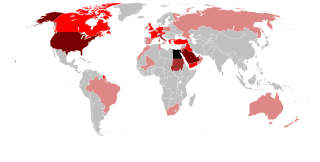
Egyptians are an ethnic group native to the Nile Valley in Egypt. Egyptian identity is closely tied to geography. The population is concentrated in the Nile Valley, a small strip of cultivable land stretching from the First Cataract to the Mediterranean and enclosed by desert both to the east and to the west. This unique geography has been the basis of the development of Egyptian society since antiquity.

Arab nationalism is a political ideology asserting that Arabs constitute a single nation. As a traditional nationalist ideology, it promotes Arab culture and civilization, celebrates Arab history, glorifies the Arabic language as well as Arabic literature, and calls for the rejuvenation of Arab society through total unification. It bases itself on the premise that the people of the Arab world — from the Atlantic Ocean to the Arabian Sea — constitute one nation bound together by a common identity: ethnicity, language, culture, history, geography, and politics.

Coptic nationalism refers to the nationalism of the Copts, a Christian ethnic and religious minority that primarily inhabit the area of modern Egypt. Coptic nationalism does not have a claim for a Coptic nation but asks for an equal position for Copts in Egypt. Most Copts live in the south of Egypt but the largest concentrations of Copts lives in Cairo and Alexandria. The Copts, like the rest of Egyptians, are descended from the pharaonic inhabitants of Egypt. Most ethnic Copts belongs to the Coptic Orthodox Church. Copts number between 10-15 percent of the Egyptian population of 104 million
